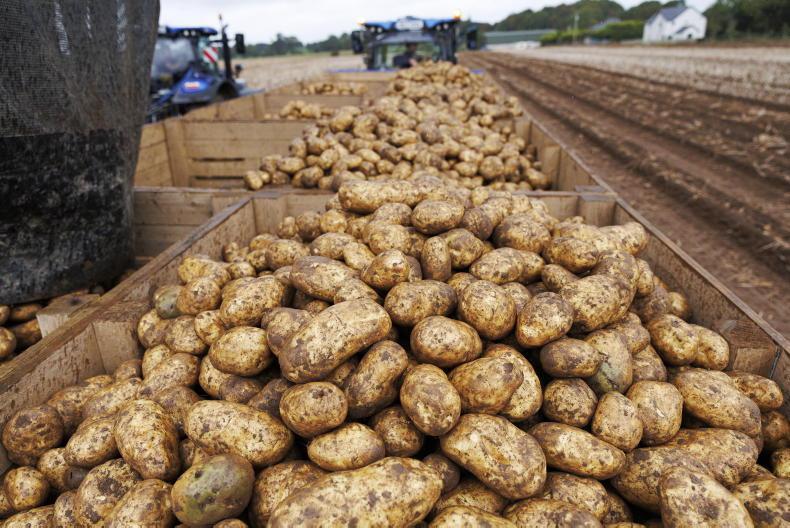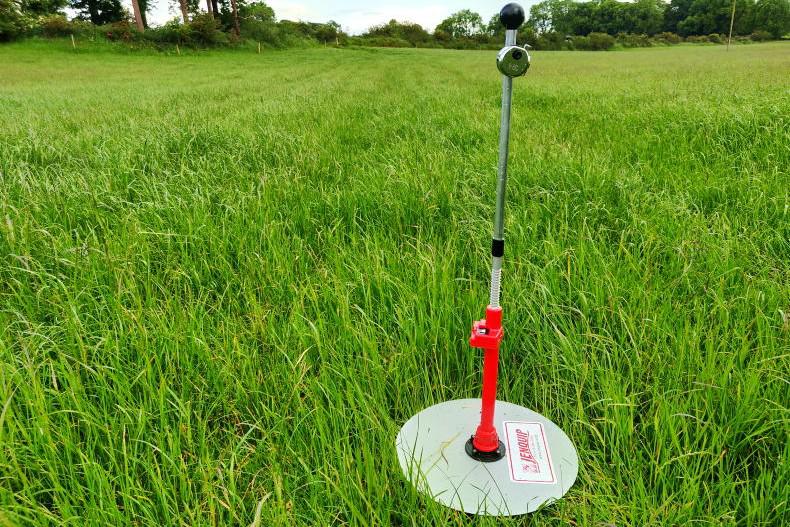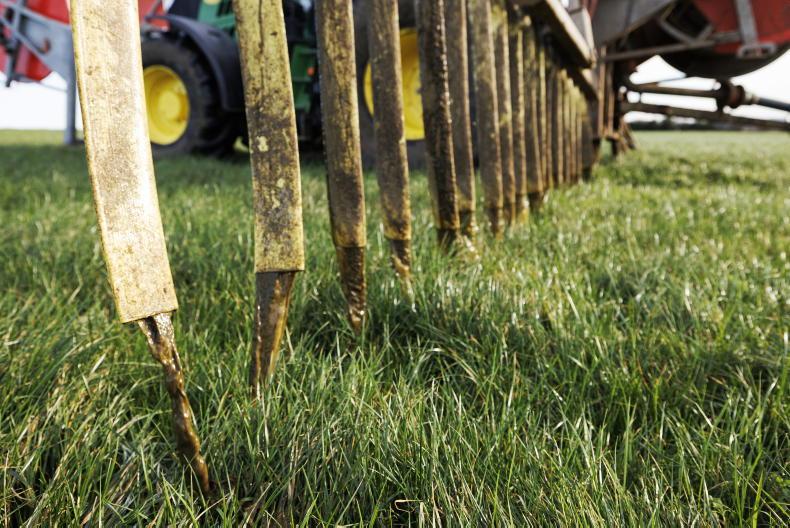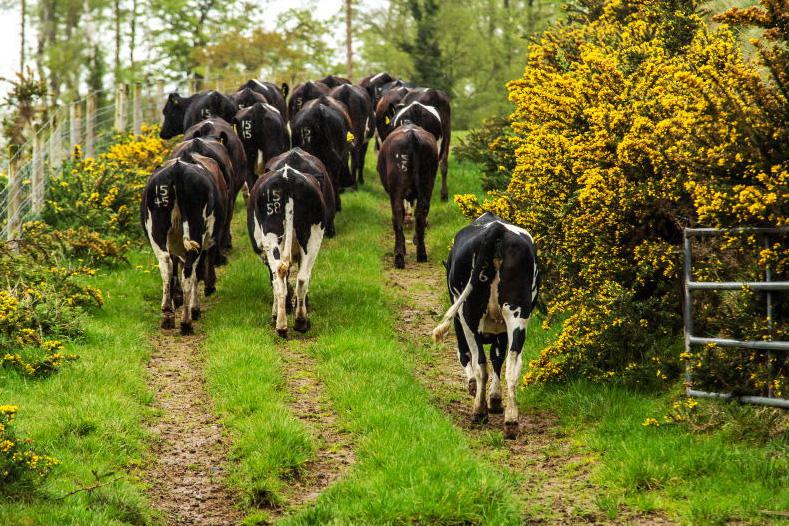Including companion forages with perennial ryegrass swards has the potential to increase net profit by up to €100/ha when compared to performance from perennial ryegrass- only swards.
This potential lift in performance is based on the results of a five-year study completed in Mellows Campus Athenry from 2018 to 2022 headed up by Sarah Woodmartin.
The results were presented at the recent Teagasc lowland sheep conferences with the lift in potential financial performance underpinned by higher lamb performance.
Four treatments were investigated – perennial ryegrass and white clover (PRG + WC), perennial ryegrass and red clover (PRG + RC), perennial ryegrass and chicory (PRG + C) and perennial ryegrass and plantain (PRG + P) while the control was perennial ryegrass.
Trial metrics
For the production years 2018-2022, the treatments were as follows – 24 Texel-cross and Belclare-cross ewes and their lambs which were stocked at 11.5 ewes/ha.
Lambing commenced from late February with sheep grazed in a rotational grazing system pre-weaning and in a leader-follower system thereafter.

Lambs grazing companion forage swards.
Lambs were weaned at approximately 15 weeks of age and drafted at slaughter to deliver a target carcase weight of 20kg. Chemical nitrogen application was 120kg per hectare annually.
The typical sward forage content for companion forages was in the region of 7% for white clover, 10% for red clover, 8.5% for chicory and 14% for plantain pre-weaning.
This increased to about 19% for white clover, 20% for red clover, 15% for chicory and 21% for plantain post-weaning which is to be expected with companion forages achieving higher performance in the second half of the year.
Sarah commented that analysis of sward chemical composition post-weaning showed the addition of clover increased sward digestibility and crude protein content, the addition of all companion forages reduced fibre content while chicory and plantain increased ash content.
Lamb performance
As detailed in Table 1, there was no significant difference in performance pre-weaning across the treatments.
However, there was a significant difference in performance post-weaning with lambs grazing perennial ryegrass-only swards averaging just shy
of 130g/day.
Lambs grazing white clover achieved a 33g/day higher daily liveweight gain (DLWG) while those on red clover gained 41g/day more and chicory 40g/day higher. Plantain was the lowest at 25g/day higher weight gain.
This in turn resulted in lambs on red clover reaching slaughter 32 days earlier than on PRG (231 days) with those on chicory finishing 27 days sooner, while white clover was just one day back at 26 days and plantain at 16 days.
Sarah also presented information on the average cost of concentrates per lamb required to finish lambs.
This ranged from €4 per lamb for PRG, €2.20 for white clover, €1.85 for plantain, 74c for chicory and 37c for red clover.
Dry matter intake
The increased lamb performance is driven by a combination of a higher dry matter intake (DMI) and organic matter digestibility. Chicory promoted the greatest increase in DMI of 14% and was slightly ahead of red clover (12%) and white clover (11%) with plantain further
back at 5% higher DMI than PRG (1.55kg DM/day).
Chicory had the highest digestibility of about 82.6% and was marginally ahead of white clover (82.5%) and red clover (82.3%).Perennial ryegrass was recorded at about 81.9% followed by plantain at 81.6%.
There was no significant differences between any treatments in terms of slaughter weight, carcase weight, kill out
per cent, fat score and conformation
grade.

Lambs grazing companion forage swards.
Meat quality testing was carried out by trained consumer panels for sensory evaluation.
Meat from all treatments scored highly but there was a significant difference to meat from lambs finished on the PRG + plantain swards with this scoring lower on tenderness and flavour.
Emissions profile
Extensive work was also carried out to establish any differences in the emissions profile across the treatments. Red clover reduced methane production by about 13% compared to PRG swards while plantain was 8% lower, white clover 5% and chicory 4%.
In terms of total kilograms of CO2 equivalent per hectare, PRG was highest at over 10,000kg CO2 eq/ha. Plantain was about 10,000kg CO2 eq/ha with the three other treatments similar at over 9,000kg CO2 eq/ha.
Take-home messages
Sarah presented a number of challenges and benefits to using companion forages. Plant persistency remains a significant barrier, particularly with chicory, plantain and red clover.
Altered grazing management is required to get the most from companion forages while there are associated costs in maintaining these swards if they are not part of a farm reseeding programme. Sarah acknowledged that more modelling work needs to be carried out as the potential net profit benefits would be quickly eroded if swards were being tilled just to sow such crops.
On the plus side companion forages can improve sward quality in summer / autumn, lead to increased intake and lamb DLWG post-weaning and reduce the age at slaughter and volume of concentrates required to finish lambs. On a bigger picture level such forages have the potential to reduce greenhouse gas emissions while there are also health benefits with fewer dosing events required.
The importance of selecting a good variety of PRG was stressed as even if the companion forage fades out of the sward you should still be left with a good PRG sward. Persistency is a much greater challenge with red clover, chicory or plantain inclusion. White clover is more resilient and persists well under grazing. Further research is ongoing to see the effect of reducing nitrogen use to 75kg N/ha with plaintain continued to assess its benefits in terms of nitrate leaching.
Including companion forages with perennial ryegrass swards has the potential to increase net profit by up to €100/ha when compared to performance from perennial ryegrass- only swards.
This potential lift in performance is based on the results of a five-year study completed in Mellows Campus Athenry from 2018 to 2022 headed up by Sarah Woodmartin.
The results were presented at the recent Teagasc lowland sheep conferences with the lift in potential financial performance underpinned by higher lamb performance.
Four treatments were investigated – perennial ryegrass and white clover (PRG + WC), perennial ryegrass and red clover (PRG + RC), perennial ryegrass and chicory (PRG + C) and perennial ryegrass and plantain (PRG + P) while the control was perennial ryegrass.
Trial metrics
For the production years 2018-2022, the treatments were as follows – 24 Texel-cross and Belclare-cross ewes and their lambs which were stocked at 11.5 ewes/ha.
Lambing commenced from late February with sheep grazed in a rotational grazing system pre-weaning and in a leader-follower system thereafter.

Lambs grazing companion forage swards.
Lambs were weaned at approximately 15 weeks of age and drafted at slaughter to deliver a target carcase weight of 20kg. Chemical nitrogen application was 120kg per hectare annually.
The typical sward forage content for companion forages was in the region of 7% for white clover, 10% for red clover, 8.5% for chicory and 14% for plantain pre-weaning.
This increased to about 19% for white clover, 20% for red clover, 15% for chicory and 21% for plantain post-weaning which is to be expected with companion forages achieving higher performance in the second half of the year.
Sarah commented that analysis of sward chemical composition post-weaning showed the addition of clover increased sward digestibility and crude protein content, the addition of all companion forages reduced fibre content while chicory and plantain increased ash content.
Lamb performance
As detailed in Table 1, there was no significant difference in performance pre-weaning across the treatments.
However, there was a significant difference in performance post-weaning with lambs grazing perennial ryegrass-only swards averaging just shy
of 130g/day.
Lambs grazing white clover achieved a 33g/day higher daily liveweight gain (DLWG) while those on red clover gained 41g/day more and chicory 40g/day higher. Plantain was the lowest at 25g/day higher weight gain.
This in turn resulted in lambs on red clover reaching slaughter 32 days earlier than on PRG (231 days) with those on chicory finishing 27 days sooner, while white clover was just one day back at 26 days and plantain at 16 days.
Sarah also presented information on the average cost of concentrates per lamb required to finish lambs.
This ranged from €4 per lamb for PRG, €2.20 for white clover, €1.85 for plantain, 74c for chicory and 37c for red clover.
Dry matter intake
The increased lamb performance is driven by a combination of a higher dry matter intake (DMI) and organic matter digestibility. Chicory promoted the greatest increase in DMI of 14% and was slightly ahead of red clover (12%) and white clover (11%) with plantain further
back at 5% higher DMI than PRG (1.55kg DM/day).
Chicory had the highest digestibility of about 82.6% and was marginally ahead of white clover (82.5%) and red clover (82.3%).Perennial ryegrass was recorded at about 81.9% followed by plantain at 81.6%.
There was no significant differences between any treatments in terms of slaughter weight, carcase weight, kill out
per cent, fat score and conformation
grade.

Lambs grazing companion forage swards.
Meat quality testing was carried out by trained consumer panels for sensory evaluation.
Meat from all treatments scored highly but there was a significant difference to meat from lambs finished on the PRG + plantain swards with this scoring lower on tenderness and flavour.
Emissions profile
Extensive work was also carried out to establish any differences in the emissions profile across the treatments. Red clover reduced methane production by about 13% compared to PRG swards while plantain was 8% lower, white clover 5% and chicory 4%.
In terms of total kilograms of CO2 equivalent per hectare, PRG was highest at over 10,000kg CO2 eq/ha. Plantain was about 10,000kg CO2 eq/ha with the three other treatments similar at over 9,000kg CO2 eq/ha.
Take-home messages
Sarah presented a number of challenges and benefits to using companion forages. Plant persistency remains a significant barrier, particularly with chicory, plantain and red clover.
Altered grazing management is required to get the most from companion forages while there are associated costs in maintaining these swards if they are not part of a farm reseeding programme. Sarah acknowledged that more modelling work needs to be carried out as the potential net profit benefits would be quickly eroded if swards were being tilled just to sow such crops.
On the plus side companion forages can improve sward quality in summer / autumn, lead to increased intake and lamb DLWG post-weaning and reduce the age at slaughter and volume of concentrates required to finish lambs. On a bigger picture level such forages have the potential to reduce greenhouse gas emissions while there are also health benefits with fewer dosing events required.
The importance of selecting a good variety of PRG was stressed as even if the companion forage fades out of the sward you should still be left with a good PRG sward. Persistency is a much greater challenge with red clover, chicory or plantain inclusion. White clover is more resilient and persists well under grazing. Further research is ongoing to see the effect of reducing nitrogen use to 75kg N/ha with plaintain continued to assess its benefits in terms of nitrate leaching.











SHARING OPTIONS